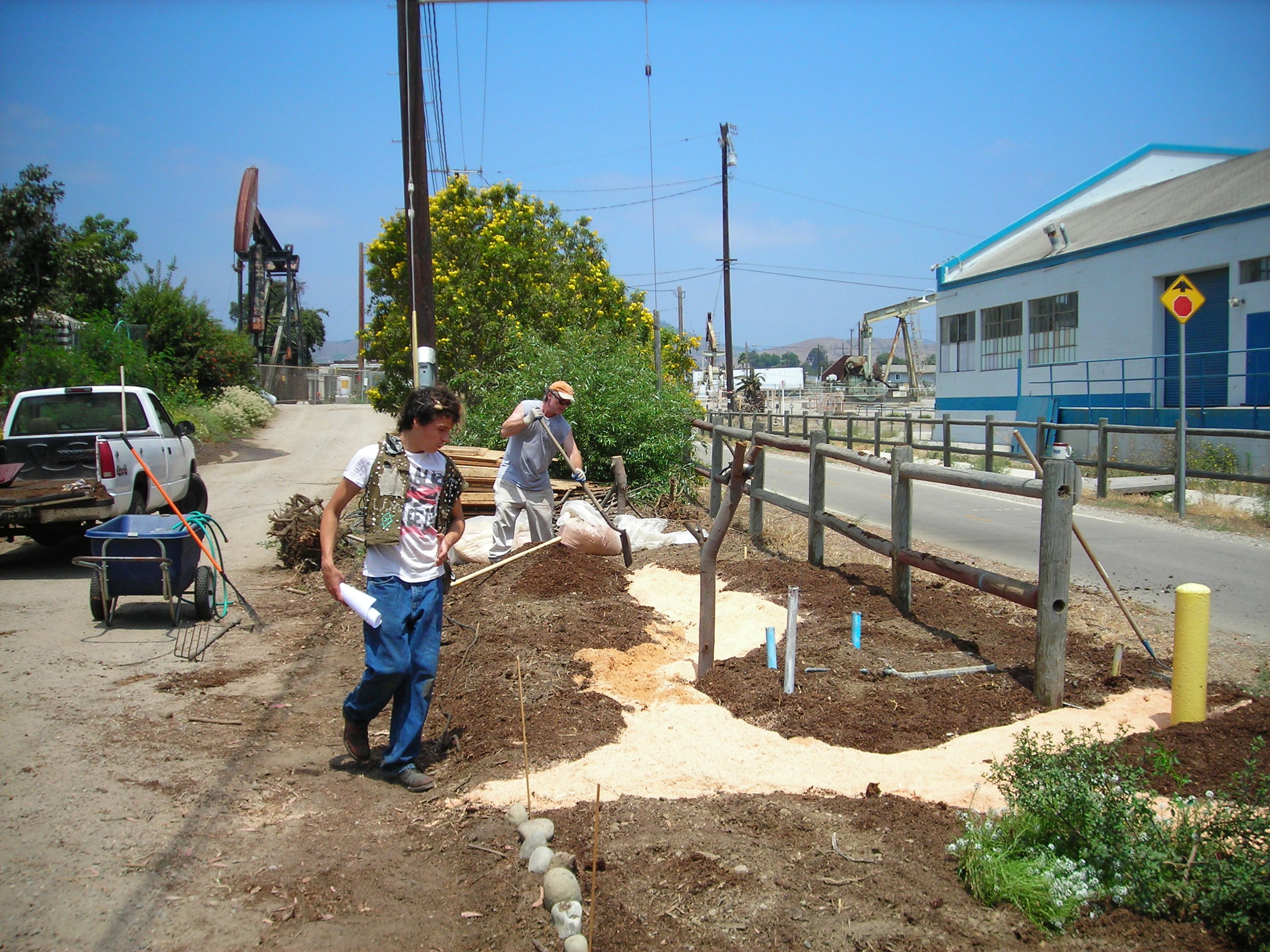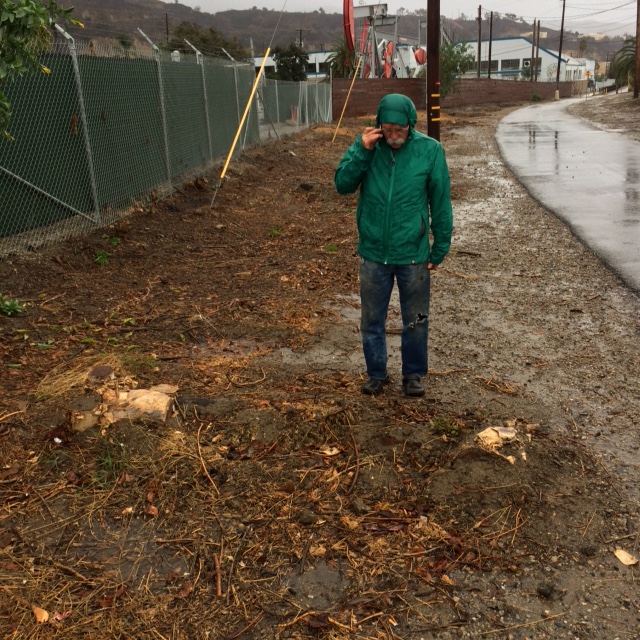Small Water Cycle Restoration Projects





We support a New Water paradigm
Water is life.
Water is necessary for healthy people, healthy soils, healthy plants, and a healthy insect ecology.
We recognize the importance of small water projects throughout the landscape for groundwater recharge, carbon sequestration, flood control, regional climate stabilization, increased precipitation, environmental rehabilitation, and water security.
We work to overcome siloed hurdles, old paradigms, red tape, and any other obstacles that may impede the appropriate efforts needed to implement effective solutions to properly value rainwater to ensure water security for generations to come.
For more resources see the links below:
Blue / Green Bike Corridor
Our office is located next to a bike path with significant water resources during rain events. Reaching out to community members and local organizations we are working to develop and install a Blue & Green Bike Corridor with 70+ rain gardens to slow, spread, and sink water into the landscape. Around the rain gardens we are planting cacti, succulents, fruit trees, and medicinal herbs. Once our small section is complete we envision continuing this work up and down the bike path and beyond!
ventura river watershed INITIATIVE
Michal Kravčík visited many places in the Ventura River Watershed in April 2017 taking pictures of the evidence of where the rain goes when it rains. He wrote this proposal to guide us in a Watershed Initiative based on restoration of the small water cycles. Meanwhile, with the wildfire and potential for flood and mudslides, he changed the part of the plan that starts with engaging local public officials. He urges us to engage private property owners, especially those in the hills who will gladly pay for simple, perfectly designed measures to hold rain where it falls. If you have any leads, contact Jan Dietrick, jdietrick9@gmail.com, 805-746-5365. Open pdf file below.
Michal Kravčík Slovakian hydrologist north of Shell Road crossing of Ventura River.
HOW TO REVIVE PRECIPITATION
Michal Kravčík
At the cost of losing my friends as I go against the wind and the rain, I will try to explain to you that reviving precipitation is realistically possible. I am doing this because having enough water is a matter of survival as I wrote in my previous status.
In my previous status, I have described that if the small water cycles are abundant in water, then there is regular persistent rain in a period of 8 days. When we empty the small water cycles, periods without rain are prolonged.
If we retain all the rainwater where it calls, we will not only increase the water supply in our territory but will also increase vapour content in the atmosphere. Thanks to increased vapour, cloud formation will be more frequent.
How do we do this? It is quite simple to implement. It is enough to retain the rainwater that usually runs-off from the increasingly sealed and damaged landscape without it being put to use and instead keep it in our land such as parks, gardens, lawns, agricultural fields, cities or villages.
The retained rainwater will thank us by infiltrating into the soil. A part of it (about 1/3) refills groundwater supplies and the other part (about 2/3) evaporates via vegetation into the atmosphere. The streams will not dry out because the underground water reserves are gradually released into the creeks. In addition, floods will be reduced.
The water will not only provide benefits such as making the landscape greener and fresher as well as cleaner and rid the air of dust and allergens, but it will also lead to the formation of more clouds in the sky that will precipitate rain again at dew point.
How to do it?
Very easy. Members of NGO People and Water launched an effective initiative 25 Years Ago:
1. When the War with the Water Titans (1990s) was fought at Horná Torysa to build the Tichý Potok dam, we designed the Blue Alternative project to save the Torysa communities. Small check dams and water holding ponds strategically placed to retain rainwater and prevent its run-off gradually refilled groundwater sources, augmented photosynthesis and bio-diversity and revived lost natural springs. Now we know that to produce a flow rate of 1 litre per second costs only 50,000 euros instead of 500,000 euros (Picture 2)
2. When I was a communal politician in Kosice (2002-2006), I implemented the Kosice Water Protocol, which advocated the retention of rainwater on all properties via various methods and technologies for the purpose of thermoregulating the cities micro-climate and maintain clean air free of allergens and dust particles via evaporation. Now we know that via rainwater retention, the city’s temperature during summer months can be reduced by a couple of degrees Celsius.(Picture 3)
3. When the Tatra Mountains were hit by the wind calamity (November 19, 2004), we received a generous donation from the former General Director of the Slovak Savings Bank to fund the implementation of the Slovak Saving Bank Water Retention Project. The project was implemented at three different locations in the High Tatras. Today, they are the most beautiful and most diversified restored forests in the Tatras. Now I know that the regeneration of damaged forests in Slovakia is realistically possible through rainwater retention measures. (Picture 4, 5)
4. When Slovakia was struck by historic floods in 2010, while others were arguing "over spilled milk" during the after-shock, the NGO People and Water offered then Prime Minister Iveta Radičova guidance with the systemic renewal of damaged areas to prevent floods from occurring. We prepared the program with implementation starting in 2011. During more than a year of implementation, more than 100,000 water retention measures have been built with a water holding capacity of 10 million m3 to revitalize damaged ecosystems. The plan was to create water retention measures that would retain more than 250 mil. M3 of water in the whole of Slovakia. More than 10,000 people worked on the project, including 7,800 long-term unemployed who could not find employment. I now know that this solution is not only applicable for flood and drought prevention, but also for climate remediation and is the most cost-effective solution to the security of communities, regions and entire river basins (Picture 6,7,8)
5. All of these findings have lead to the new initiative, Rain for Climate (www.rainforclimate.com), which we launch from Slovakia into the world, because all these past initiatives that were started by the small NGO People and Water is criminalized and harassed in its own country.
6. Now I know that the NGO People and Water, 25 years in existence, gave Slovakia something that is more valuable than gold itself. Unfortunately, the ordinary people of Slovakia have been fed much misinformation over the years by politicians and the media that they cannot recognize true gold from the tangled faces and therefore, many common people are against initiatives that can only improve their own lot.
#Californiafire, #floods, #drought


